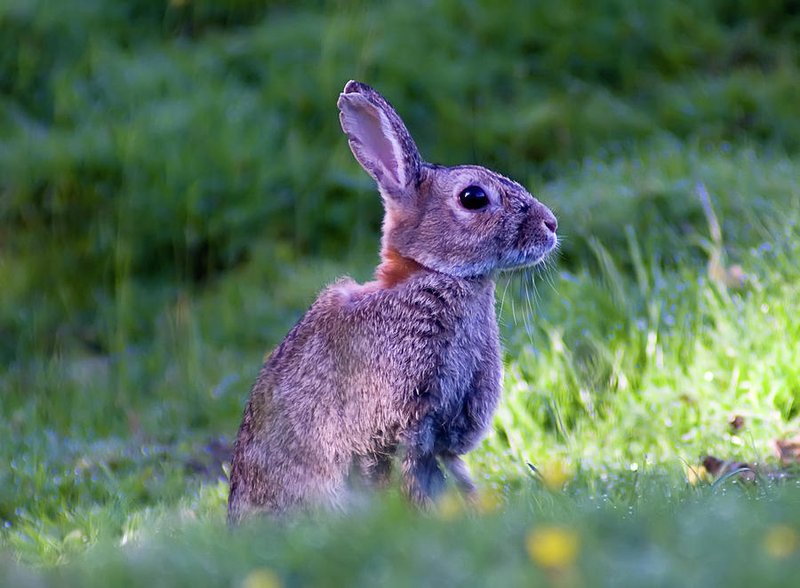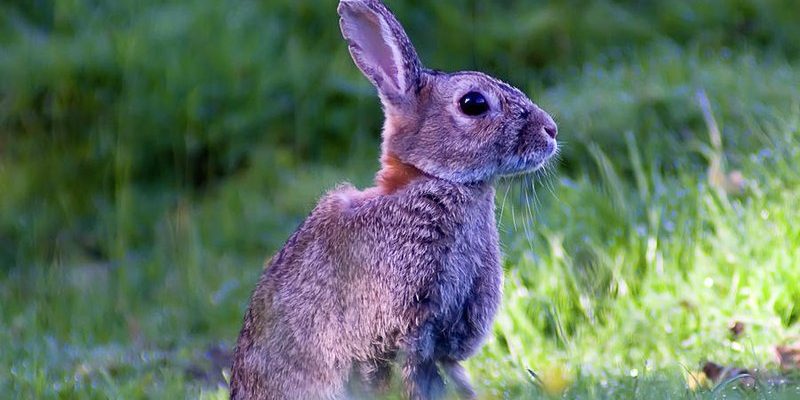
The Savanna Hare is like a little ghost of the grasslands, darting between the tall grasses of Africa with impressive speed and agility. These hares have adapted deeply to their environment, making them fascinating creatures to observe. Picture this: you’re out on a warm afternoon, and suddenly, a swift shadow flashes across your path. It’s not a bird or a lizard—it’s a Savanna Hare! With their long ears and powerful hind legs, these animals are built for life in the wild, where every sprint can mean safety or danger.
So, what makes the Savanna Hare special? Well, it’s not just their quickness. They play a crucial role in their ecosystem, serving as a food source for various predators while also helping to maintain the balance of their habitats. In this deep dive, we’ll explore their characteristics, behaviors, and why they matter to the grasslands they call home.
Physical Characteristics
Savanna Hares are quite distinct in appearance. They boast a slender body covered in a light brown coat, which provides excellent camouflage against the earth and dried grasses. The coloration typically blends perfectly with their surroundings, allowing them to remain hidden from predators. Adult Savanna Hares can reach lengths of about 45 to 70 centimeters, with a tail measuring around 5 to 10 centimeters. Their long ears can be a defining feature, often stretching to about 10 to 12 centimeters—these help them hear danger from a distance.
Another notable feature is their strong hind legs. These legs are not just for show; they enable the hare to make astounding leaps, sometimes covering distances of up to three meters in a single bound! Their forelimbs, while shorter, are still strong enough to support their movements, especially when digging or rearranging their environment.
In terms of size, the Savanna Hare can weigh between 3 to 5 kilograms, making them relatively lightweight compared to some other herbivores in their habitat. This lightness is an advantage when they need to escape predators or navigate through dense grasslands.
Habitat and Range
The Savanna Hare is primarily found in the African savannas, which are characterized by scattered trees and vast open spaces. These areas provide a perfect mix of cover and visibility, allowing the hare to evade predators while still being able to spot potential threats. They thrive in regions with both dry and wet seasons, adapting their habits based on available resources.
You might find them in areas populated by grasslands, light woodlands, and even on the edges of agricultural fields, where they can forage for food. The adaptability of the Savanna Hare means they can survive in varied environments, but their favorite spots tend to have plenty of grass and shrubs to hide among.
Interestingly, these hares also have specific burrows they dig into the ground, which serve as shelters and nesting sites. These burrows help protect them from the intense heat of the day and provide a safe space to rest or raise their young.
Diet and Feeding Habits
When it comes to food, Savanna Hares are herbivores that primarily feast on grasses, herbs, and occasionally the leaves of shrubs. Their diet is quite diverse, allowing them to adapt to different seasons and conditions. During the wet season, they enjoy the lush, tender shoots, while in the dry season, they rely more on the tougher, drier grasses.
Here’s something interesting: Savanna Hares practice a behavior called coprophagy, where they eat their own feces. While it might sound strange, this behavior helps them extract extra nutrients from their food. By consuming their droppings, they can digest the food more fully, ensuring they get the most out of their plant-based diet.
Additionally, their large front teeth are designed for tearing and grinding down tough vegetation. It’s a skillful process, and the hares often spend hours munching on their favorites. Being careful not to overstay their welcome in one spot, they tend to graze in different areas to avoid depleting their food source.
Behavior and Social Structure
Savanna Hares are generally solitary animals, although they can sometimes be seen in pairs during the mating season. They are crepuscular, meaning they are most active during dawn and dusk. This behavior helps them avoid the heat of the day and reduces the risk of encountering predators. As you can imagine, their ability to blend into the environment is crucial for their survival.
When they sense danger, their first instinct is to freeze and assess the situation; but if a predator gets too close, they will make a quick dash to escape. Their powerful legs allow for spectacular bursts of speed, and they can zigzag to throw off predators who are chasing them. It’s like a game of hide-and-seek, and the Savanna Hare is a master at it.
During mating season, males can become quite territorial and may engage in playful sparring matches with other males as they compete for the attention of females. These displays, while seemingly playful, are essential for establishing dominance and ensuring successful mating.
Reproduction and Lifespan
When it comes to reproduction, Savanna Hares typically breed during the warmer months when food is plentiful. After a gestation period of about 42 days, a female can give birth to a litter of 2 to 4 young hares. These young are called leverets and are born fully furred with their eyes open, making them quite independent right from the start. Within a few weeks, they begin to nibble on solid food while still nursing from their mother.
The mother is incredibly attentive, hiding her young in a shallow depression to keep them safe from predators. Once the leverets are old enough to fend for themselves, they’ll venture farther away, exploring their surroundings while still relying on their mother’s guidance.
In terms of lifespan, Savanna Hares can live up to 3 to 5 years in the wild. However, their life can be cut short due to predation, disease, or environmental factors. In captivity, with fewer threats, they can sometimes live longer, often reaching up to 8 years. Nature can be tough, but these hares are built to navigate it as best they can.
Conservation Status
Currently, the Savanna Hare is not considered endangered, but it faces threats from habitat loss due to human activities like farming and urban development. As natural habitats shrink, these hares find it increasingly difficult to find food and shelter. Conservation efforts are essential to ensure that their populations remain stable.
Protected areas and wildlife reserves play a crucial role in helping maintain their habitats, allowing the Savanna Hare to thrive without the pressures of encroaching development. It’s vital for us to remember that every little effort counts in conservation efforts. You might even find opportunities to participate in local programs aimed at preserving wildlife and their habitats.
Education also plays a key role in conservation. By increasing awareness about the importance of species like the Savanna Hare, we can inspire action and support for their protection. The more people know about these incredible creatures, the more likely they are to take steps to safeguard their future.
Interesting Facts
| Size: | 45 to 70 cm (18 to 28 in) in length |
| Weight: | 3 to 5 kg (6.6 to 11 lbs) |
| Habitat: | African savannas and grasslands |
| Diet: | Grasses, herbs, and shrub leaves |
| Speed: | Up to 72 km/h (45 mph) |
| Lifespan: | 3 to 5 years in the wild |
FAQ
Where can I find Savanna Hares in the wild?
Savanna Hares can be found primarily in the open grasslands and savannas of Africa. They thrive in areas with plenty of grasses and a mix of shrubs, which provide food and cover from predators. If you’re exploring African savannas, keep your eyes peeled during dawn or dusk when they are most active!
What do Savanna Hares eat?
These hares are herbivores, primarily feeding on grasses and herbs. They have a varied diet that allows them to adapt to different seasonal conditions. During the wet season, they prefer tender shoots, while in dry times, they rely on tougher grasses. Interestingly, they also eat their own droppings to extract additional nutrients.
How fast can Savanna Hares run?
Savanna Hares are incredibly quick and can sprint at speeds of up to 72 km/h (around 45 mph). This speedy escape mechanism is critical for evading predators. They often use zigzag patterns while running to throw off any pursuers, making them hard to catch.
How do Savanna Hares reproduce?
During the warmer months, Savanna Hares mate, with females giving birth after around 42 days of gestation. A litter typically consists of 2 to 4 leverets, which are born fully furred and with their eyes open. This independence helps them quickly adapt to their surroundings, although they still benefit from their mother’s care in the early weeks.
What are the main threats to Savanna Hares?
The primary threats to Savanna Hares include habitat loss due to agricultural development, urban expansion, and natural predators. As their habitats shrink, they may struggle to find food and shelter, making conservation efforts crucial for their survival.
Are Savanna Hares social animals?
Generally, Savanna Hares are solitary creatures, though they may form pairs during the mating season. They are most active during twilight hours, allowing them to avoid the heat and potential predators while foraging for food in the open grasslands.
Can Savanna Hares be kept as pets?
While it’s technically possible to keep a Savanna Hare as a pet, they are wild animals with specific needs that are difficult to meet in a domestic environment. They thrive in their natural habitats, so it’s best to appreciate them in the wild or through responsible conservation efforts rather than trying to domesticate them.
How do Savanna Hares protect themselves from predators?
Savanna Hares rely heavily on their remarkable speed and agility for protection. When they sense danger, they often freeze to blend into their surroundings. If a predator gets too close, they can leap away in zigzag patterns to evade capture. Their natural camouflage also helps them stay hidden from lurking threats.
What role do Savanna Hares play in their ecosystem?
Savanna Hares are essential for maintaining the balance in their ecosystems. They serve as prey for a range of predators, including birds of prey and carnivores. Additionally, by grazing on grasses and shrubs, they help promote the growth of new vegetation, which benefits the entire ecosystem.
Are Savanna Hares nocturnal?
Savanna Hares are not strictly nocturnal; they are crepuscular, which means they are most active during the hours around dawn and dusk. This behavior allows them to avoid the heat of the day and reduce the risk of predation while searching for food.
What is a significant adaptation of the Savanna Hare?
One of the most significant adaptations of the Savanna Hare is its ability to run at high speeds. This ability, coupled with their strong hind legs and remarkable agility, helps them escape from predators. Additionally, their camouflaged fur allows them to blend into the grasslands, giving them an edge against threats.

